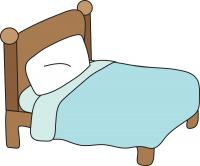Reiki therapy helps ease discomfort while supporting the body’s natural healing processes, possibly helping reduce side effects from medications and lessen their side effects.
Reiki should only be considered as a complementary treatment alongside proven medical therapies. Its efficacy has yet to be thoroughly explored and should not be seen as a cure for any condition.
Relaxed and in an comfortable setting, a healer will gently place their hands over various parts of the body for therapeutic massage sessions that may bring different sensations or experiences to each participant.
Reiki What Is It?
Reiki is a spiritual healing practice which employs noninvasive, gentle touch to promote feelings of wellbeing. Reiki may help balance your energy field and stimulate natural healing processes within the body. While used alongside other therapies, Reiki should never be considered as a cure for serious illnesses.
Reiki practitioners believe illness is caused by low energy. A session typically entails the practitioner placing hands above and on their client to stimulate healing energy. There are various theories behind how this works. One such theory suggests the human body creates an electromagnetic field called a biofield that protects us. It is controlled by our autonomic nervous system which regulates heartbeat and breathing rates among other bodily processes. Reiki treatment may have the ability to shift this field toward parasympathetic dominance, providing greater relaxation, restfulness, and recovery benefits.
Another theory suggests that the energy from Reiki stimulates your hypothalamus, sending signals to your nervous system to relax or stimulate different bodily functions. A session may increase feelings of well-being and boost mood. However, its efficacy for specific health conditions remains unknown.
Reiki therapy may benefit someone by opening energy channels within its recipient and thus helping heal and promote relaxation. People who believe in alternative therapies may find sessions capable of relieving stress and pain
Reiki acts as a bridge between mind, body, and spirit to reduce stress levels and enhance mental and physical wellness. Reiki may even help alleviate symptoms associated with chronic illness like anxiety and depression.
Many people find reiki beneficial in managing stress levels and improving overall wellness, but it should never replace conventional medical treatment. Furthermore, most insurance policies do not cover such alternative therapies. Before receiving reiki treatment, be sure to inquire about your practitioner’s qualifications, and training as well as membership of any professional associations they belong to.
What Is Involved?
At a typical Reiki session, a practitioner uses gentle touches or hovering hand positions on your body in a sequence. You must remain fully clothed and lie down during treatment which usually lasts 20 to 90 minutes. Before your session begins, discuss any ailments or issues with the practitioner and set an intention for healing.
Reiki may have the ablility to lower heart rate and blood pressure while also alleviating pain, anxiety, and stress. Reiki can also help your autonomic nervous system shift from its sympathetic-dominant or “fight-or-flight” state into its parasympathetic-dominant or “rest-and-digest” state.
An integral component of reiki can include crystals or other objects thought to enhance its energy, although no scientific evidence supports their efficacy. Yet some people report feeling more relaxed and peaceful after participating in sessions where crystals or other items were included.
When seeking out a reiki treatment, ensure you locate an experienced practitioner with good hygiene practices in order to protect you from germs. Some practitioners will have you lie on a massage table while others may ask that you sit in a chair with your feet propped up. You don’t need to undress, but some may remove coats or shoes during sessions.
Your experience following a Reiki session depends on your energy blocks and where the practitioner works on them, but typically many feel lightened or relaxed while others experience their emotions releasing more fully.
How Does It Work?
Reiki healers use universal energy to cleanse and recharge the body’s energy fields, allowing life force to flow freely and rid any negative thoughts or emotions which might otherwise lead to physical ailments, such as anxiety or pain. Reiki has also been found helpful for alleviating post-knee surgery pain relief, lower blood pressure levels, improve quality of life for cancer patients, as well as reduce fatigue during chemotherapy treatments.

Reiki is founded on the concept of the biofield, an electromagnetic field which pervades all living creatures and extends up to 15 feet from them. Each cell produces an electrical charge which creates magnetic fields. When activated by a Reiki healer, these pathways become channels for balance and healing for clients.
Reiki sessions may take place either in a treatment room, where the practitioner has access to your vital signs, or through remote healing, connecting with patients remotely without being physically present. Sessions typically last about an hour.
Researchers acknowledge the need for further high-quality studies, but practitioners of Reiki assert it can complement other medical and therapeutic treatments. The Reiki sessions may bring relief and reduced anxiety to patients, allowing them to endure and even appreciate the traditional medical treatments.
Find A Session
Reiki practitioners can conduct sessions anywhere from their own homes to wellness centers and spas, clinics, cruise ships and hotels. Practitioners can usually be found in major urban areas.
Before beginning their sessions, practitioners typically engage in an initial conversation with clients and assess any areas on their bodies they would like addressed, as well as any health conditions which may prevent lying still on a treatment table.
A session can last between 20 and 90 minutes. During this time, clients lie fully clothed on a treatment table (which looks similar to a massage table) or sit comfortably supported in a chair while their practitioner uses various hand movements to lightly touch or hover over specific parts of their body. Some individuals report feeling heat or tingling sensations, while others experience visualizations, memories or feelings of emotional and spiritual connectedness during sessions.
After each session, a practitioner may discuss any changes they have seen or felt in their client and offer recommendations for aftercare. For instance, they might suggest drinking plenty of water and resting. It may seem as though clients become tired more quickly after sessions than normal after receiving such energy. This shouldn’t be taken as an adverse response. This fatigue is simply your body letting go and recovering from having been exposed to such stimulation.
Once an individual becomes proficient at providing Reiki sessions, they can begin advertising their services. Word of mouth marketing is usually the best for new practitioners. Some Reiki practitioners opt to rent space where they can offer sessions, creating a professional look to attract more clients.

ASMR Reiki
ASMR, known for its calming and tingling sensations triggered by certain auditory and visual stimuli, has captivated millions worldwide. On the other hand, Reiki, a traditional Japanese healing technique, focuses on channeling universal life force energy to promote physical, emotional, and spiritual well-being.
When these two powerful practices intertwine, they create a harmonious blend that can transport you to a state of utter tranquility. ASMR triggers such as whispering, soft speaking, tapping sounds or hand movements can be combined with Reiki to create a multi-sensory experience and promote deep relaxation for improved wellbeing.
The essence of ASMR Reiki lies in the gentle touch and soothing whispers that accompany the Reiki healing process. Practitioners combine the soft sounds of whispering, tapping, and brushing with the healing energy of Reiki to induce a deep sense of relaxation, stress relief, and even sleep induction. These carefully crafted auditory and visual triggers help activate the ASMR response, enhancing the overall healing experience.
Imagine lying comfortably in a serene setting, surrounded by subtle sounds of whispering voices, gentle tapping, and the delicate movements of hands hovering above you. As the Reiki practitioner channels the universal life energy, you may feel a soothing warmth or tingling sensation spreading throughout your body. This combination of ASMR triggers and Reiki energy can create a profound sense of peace, balance, and rejuvenation.
The benefits of ASMR Reiki extend beyond relaxation. Many individuals have reported experiencing relief from anxiety, insomnia, chronic pain, and even emotional trauma. The combination of ASMR’s calming effect and Reiki’s healing energy can help release blockages in the body’s energy pathways, promoting a sense of overall well-being.

Reiki For Sleep
One of the primary causes of sleep disturbances is stress. Reiki works by balancing the body’s energy, helping to alleviate stress and anxiety. When stress levels are reduced, the body can enter a state of relaxation more easily, facilitating a peaceful and uninterrupted sleep. Regular Reiki sessions can be beneficial in managing stress levels, leading to improved sleep patterns over time.
Reiki sessions induce a deep state of relaxation, allowing the body and mind to unwind from the day’s stresses. This relaxation response can help individuals fall asleep faster and experience more restorative sleep.
Reiki practitioners believe that imbalances in the body’s energy centers, known as chakras, can contribute to sleep disturbances. Through Reiki sessions, these energy centers are harmonized, allowing the energy to flow freely. When the energy is balanced, it positively affects the body’s overall functioning, including sleep patterns. By addressing the root cause of sleep issues, Reiki offers a holistic approach to improving sleep quality.
Reiki therapy is a non-invasive and natural healing technique. Unlike medications or other interventions that may have side effects, Reiki is safe and gentle. It can be used alongside any existing treatments or therapies, making it a valuable complementary approach for those seeking a more holistic solution to their sleep problems.
As Reiki cannot treat insomnia or other sleep disorders alone, other techniques must also be utilized for better restful slumber. These include regular exercise, limiting caffeine intake, and avoiding computer and phone screens near bedtime. A medical consultation may be necessary to eliminate any physical symptoms, such as undiagnosed sleep apnea.
External Link: What is reiki, and does it really work?
